You can tell a lot about a person by playing word association games, and the word “saxophone” may be particularly telling. Older generations will immediately name Lester Young, Charlie Parker, or John Coltrane.
Those who grew up in the ‘70s and ‘80s will respond with “Careless Whisper”, “Never Tear US Apart”, or “Who Can it Be Now?”. And Star Wars fans will associate it with photos of Gina Carano. But beyond these associations (players, songs, and models), you have the world of musicians, who will name an actual type of saxophone (sax, for short).
Invented by and named after Belgian musician Adolphe Sax in the 1840s, the sax is one of those instruments that became a staple of several musical genres due to its unique sound and soulful effects on the listener.
There are four main types dealing with the musical scale, as well as ten additional sub-types. You’ve probably never heard of most, so let’s take a moment to look at all 14 types, as well as a surprise sax-related bonus item.
Read Also: 24 Types of Drums
Types of Saxophones
1. Alto Sax
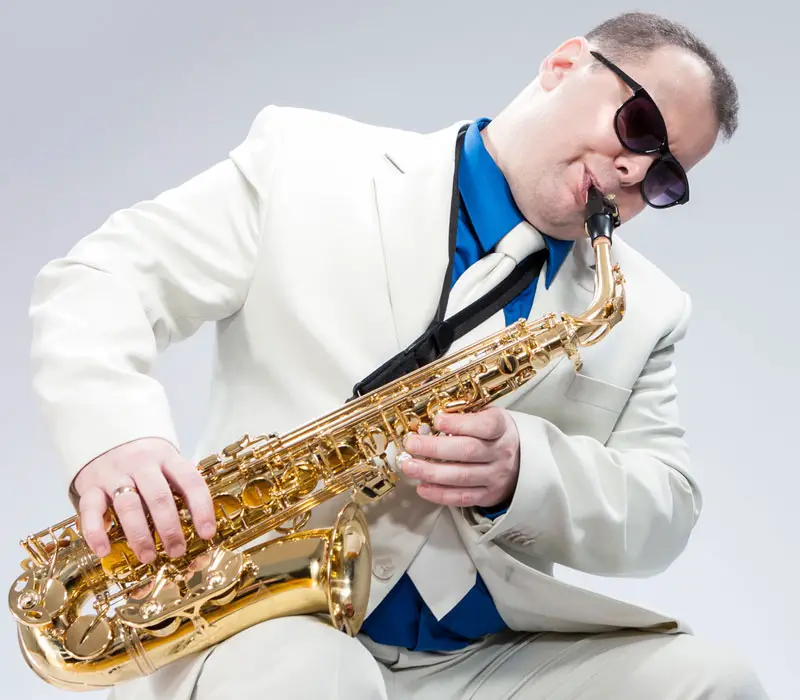
One of the Big Four and perhaps the most popular, an alto sax was the instrument of choice for the legendary Charlie Parker. It’s tuned to the key of E♭ and has a smaller size that makes it easier for students to carry and learn on.
As the fingering is essentially the same, it’s perfect for learning on before graduating to larger models. It’s also a staple of traditional black and white jazz bands.
See Also: 13 Kinds of Trombones
2. Baritone Sax
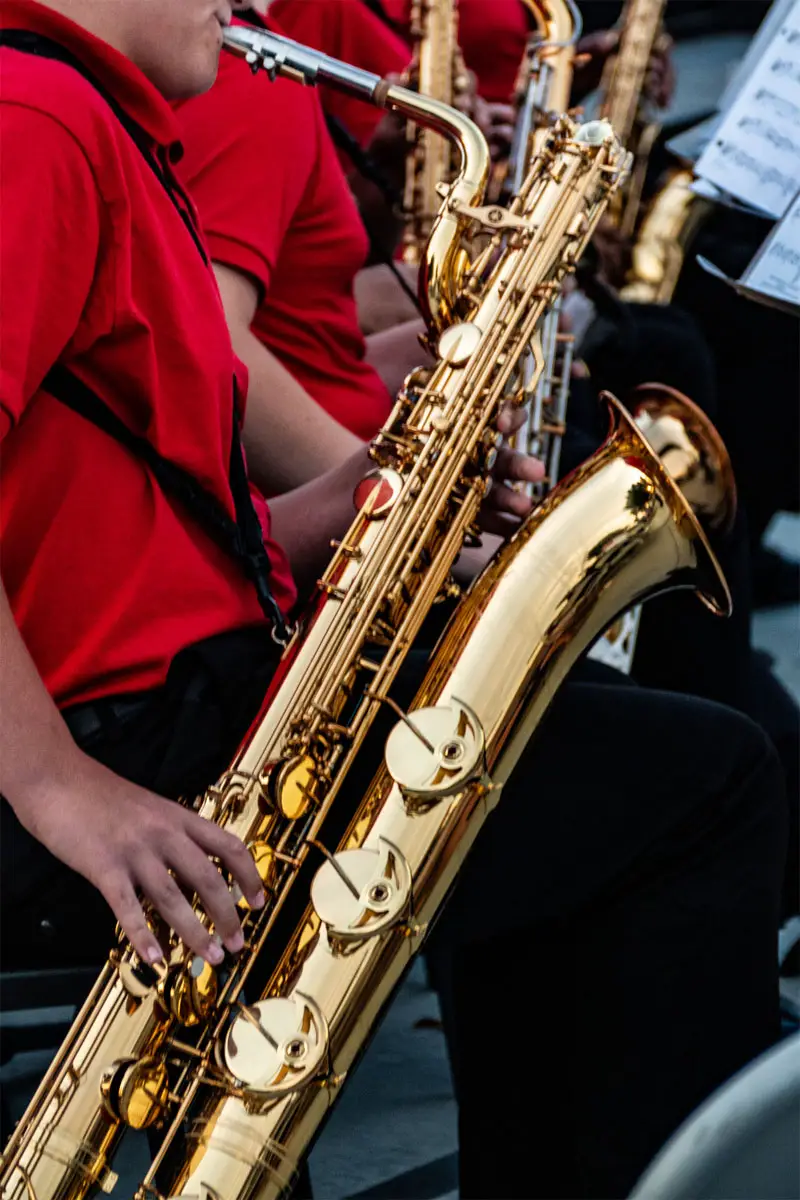
The baritone (or Bari) sax is the deepest pitched of the Big Four, being tuned to the key of E♭ one full octave below that of the alto. Its bigger size and weight means players need a support harness to wield it, and it requires more air power than its siblings.
However, the deep, rich sound is often used in a supporting role while making for amazing solos in the right hands, much like the bass guitar. It’s the instrument of Lisa Simpson and made famous in real life by the likes of Gerry Mulligan.
3. Bass Sax
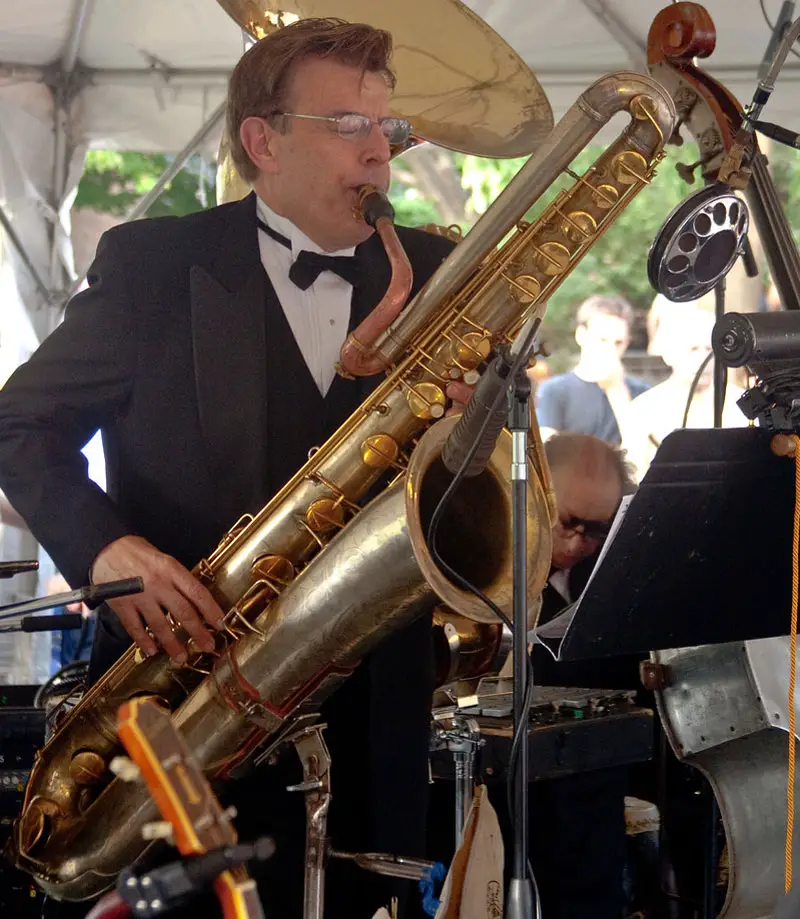
One of the larger types of saxophone, the bass sax requires a stand when playing. The neck dips from the top of the instrument, extending from about 1/3 of the way down the body to make playing easier while seated.
It’s tuned to the key of B♭, one octave below the tenor sax.
Read Also: 13 Types of Harps
4. C-Melody Sax
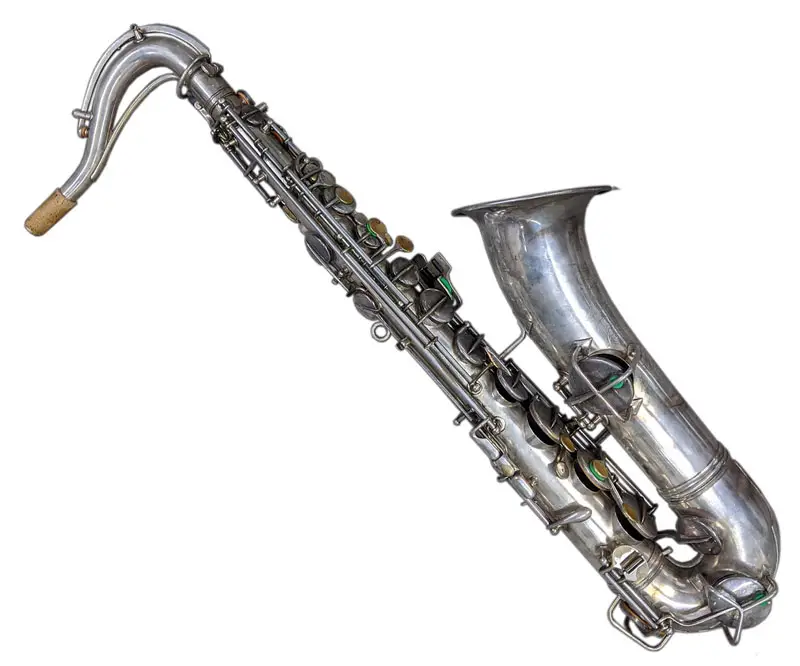
This type of sax was at the height of its popularity during the Roaring ‘20s and into the ‘30s, where it was a staple of Big Band and jazz.
What sets it apart from all other saxes is the fact that it’s the only one tuned to a concert pitch, in this case, the key of C in concert pitch.
5. Conn-o-sax
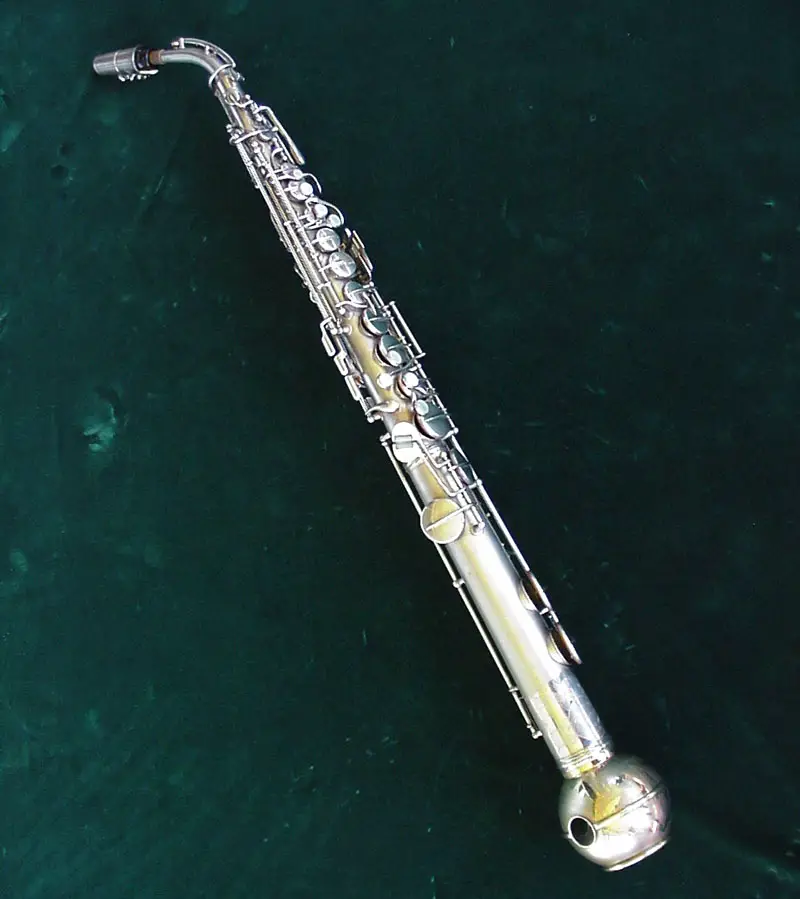
This hybrid design of a saxophone and English horn was produced by C.G. Conn from 1929 to 1930 but suffered from poor sales.
It shared the timbre of an English horn and the default key of F, but could play several different keys, ranging from low A to high G.
6. Contrabass Sax
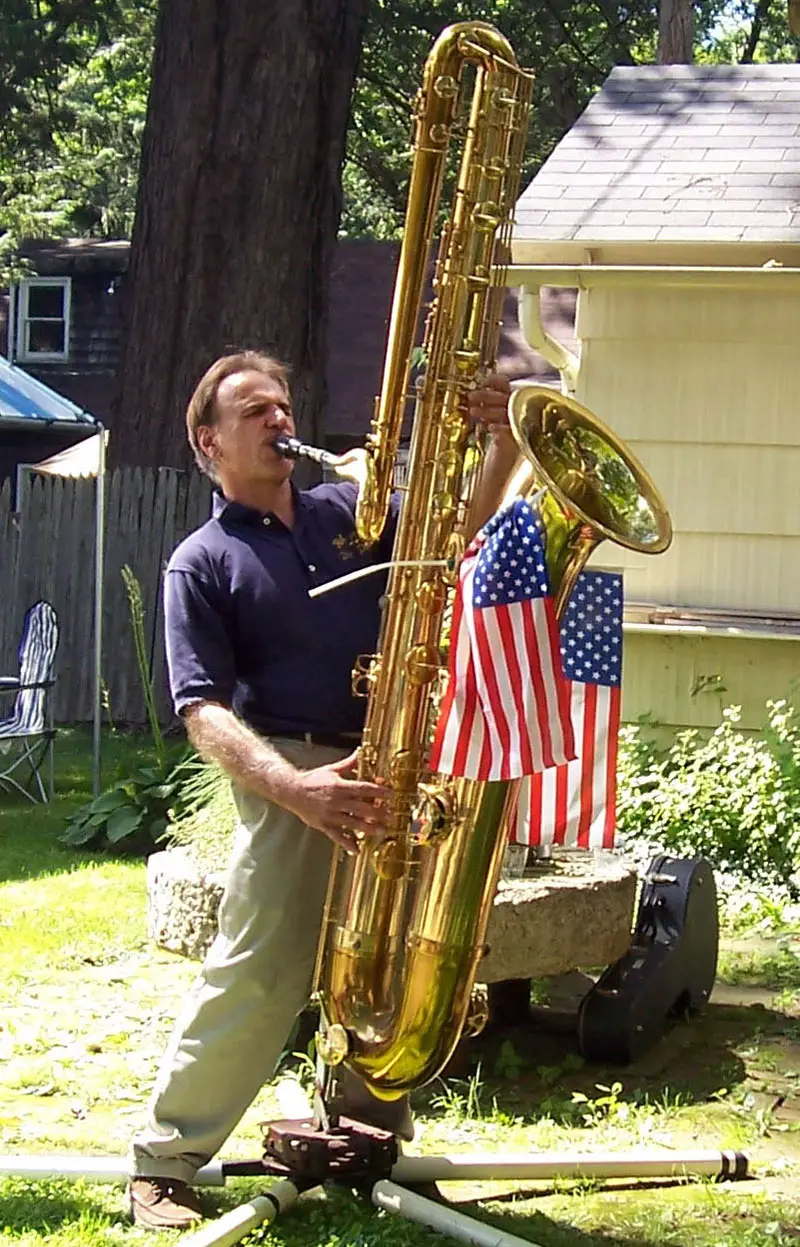
The second largest saxophone, this model measures an impressive 6’4” tall and requires a stand to play. As with the bass sax, the neck dips to make it easier to play, with the mouthpiece being approximately halfway down the sax’s body.
It’s tuned to E♭, one octave below the baritone sax. This is one of the models which became the subject of lawsuits, with some fans believing them to be an authentic part of Sax’s original designs and others believing to this day that they should be credited to a rival inventor.
See Also: 19 Different Types of Flutes
7. Mezzo-Soprano Sax
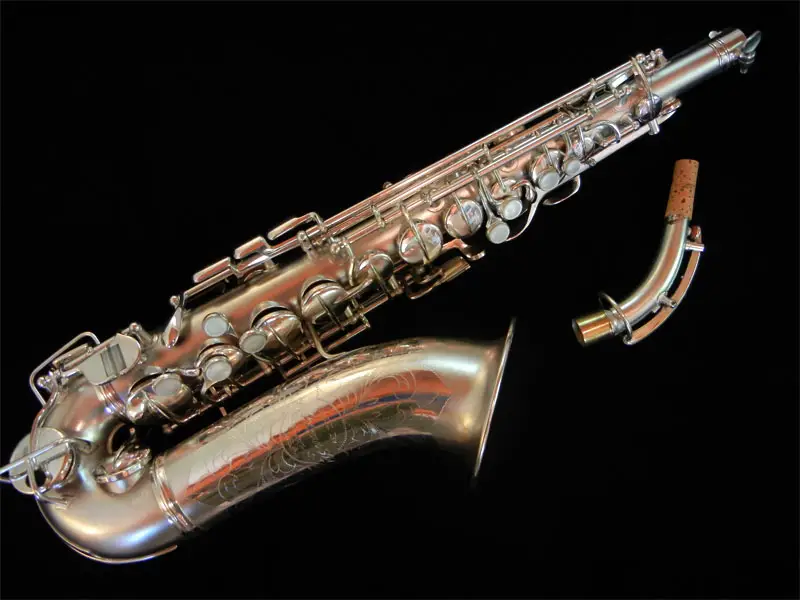
This unique sax is the only one tuned to the key of F, in this case one tone above the alto. It has a similar size and shape to its alto cousin. It’s not a true sax and was produced between 1928 and 1929 by C.G. Conn, making them a rare sight.
8. Saxello
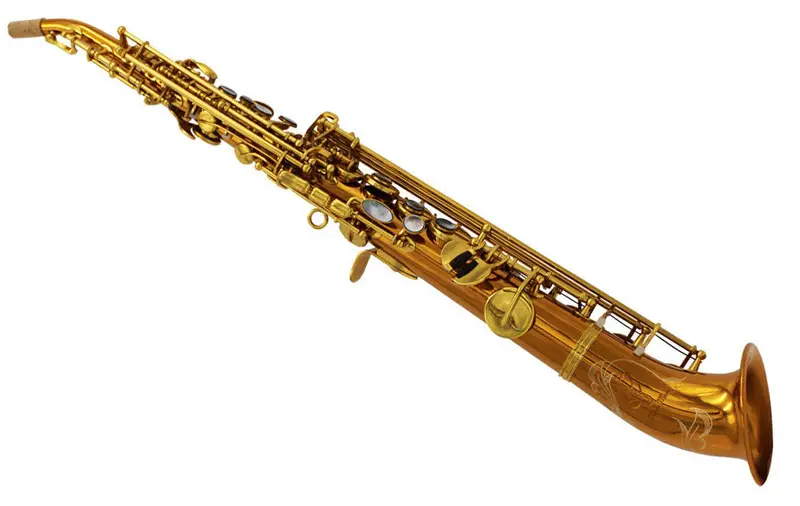
This rare variant of the soprano sax was mainly produced from 1924 into the 1930s and was patented in 1926 by H.N. White. Production ended due to the Great Depression, and they’re now known as the “King Saxello” due to the company’s purchase and rebranding in 1965.
The design is that of a soprano sax with a slightly curved bell and neck and is tuned to B♭ like its more common cousin. While the saxello is once again in production, the original H.N. White-produced saxellos demand a high price on the open market due to a combination of rarity and quality.
See Also: 13 Types of Bells
9. Sopranino Sax
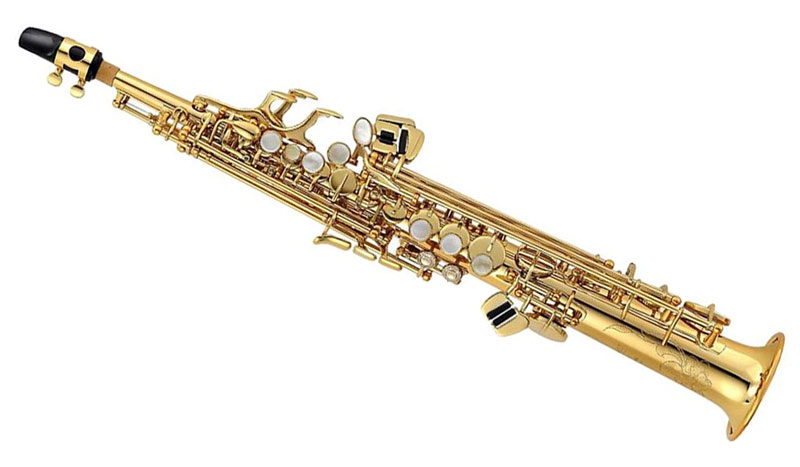
This unusual sax is tuned to the key of E♭, one octave higher than the alto and may be shaped curved or straight-boned. However, it’s smaller than the soprano, measuring at a toy-scale of just under two feet long.
It’s commonly used in movies and Big Band or classical recordings.
10. Sopranissimo Sax
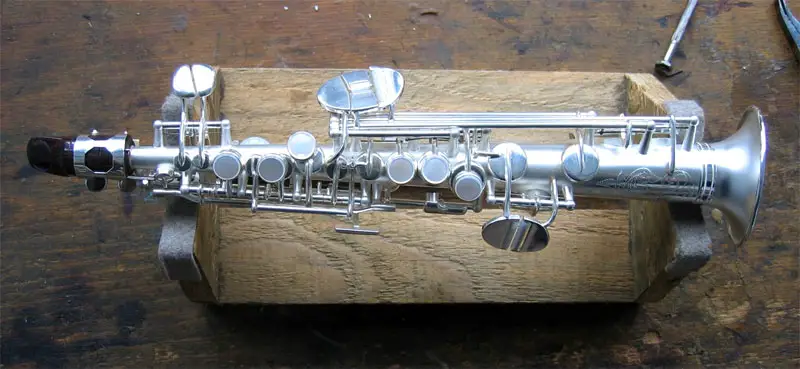
If you thought the sopranino was small, the sopranissimo would like a word. Sans mouthpiece, this tiny sax measures 11 13/16”, while the mouthpiece brings it to just under 1’ 1”. This isn’t a true saxophone, having been invented by Benedikt Eppelsheim.
It’s tuned to B♭, one octave above the soprano sax, making it the highest pitch of all existing saxophones. The sopranissimo is sometimes referred to as a piccolo or soprillo sax.
11. Soprano Sax

The preferred musical instrument among the NY mafia, this is the highest pitched member of the Big Four. Soprano saxophones are tuned to the key of B♭ and has a straightened bore that makes it look more like a brass clarinet.
The instrument became popular among smooth jazz enthusiasts, thanks to its extensive use by the popular artist Kenny G in the 1980s.
12. Subcontrabass Sax/Tubax
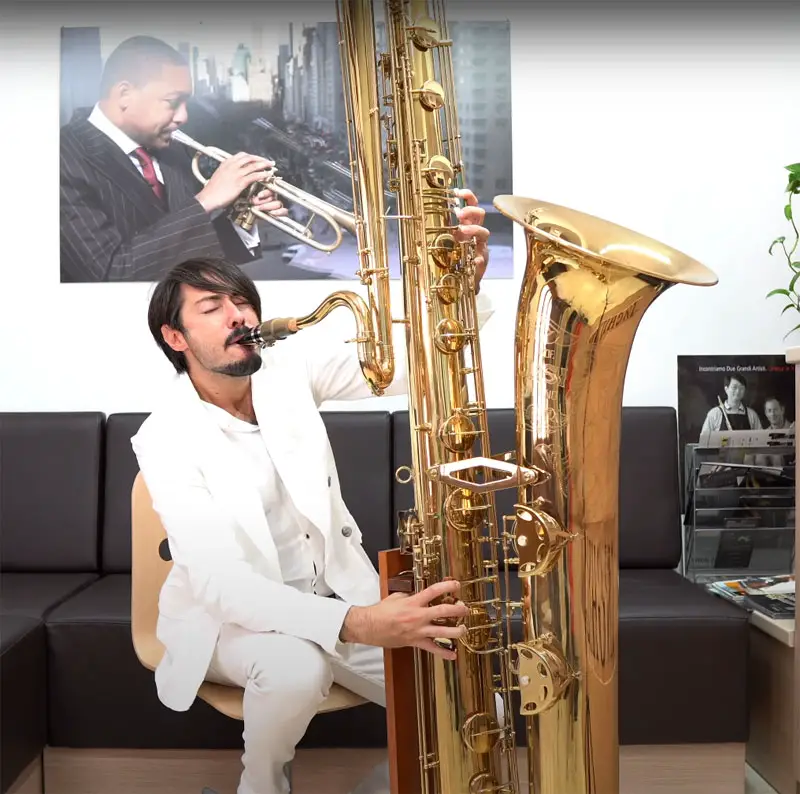
With some models measuring over seven feet tall, this is the largest and deepest of all saxophones. It may or may not be considered a true saxophone, as Adolphe Sax designed and patented it but his design was never built.
Two attempts were made in the 1960s to build one, but both were unsuccessful. Credit for the first actual subcontrabass built goes to Benedikt Eppelsheim, who built a B♭ subcontrabass in 1999 as part of his tubax line.
13. Tenor Sax
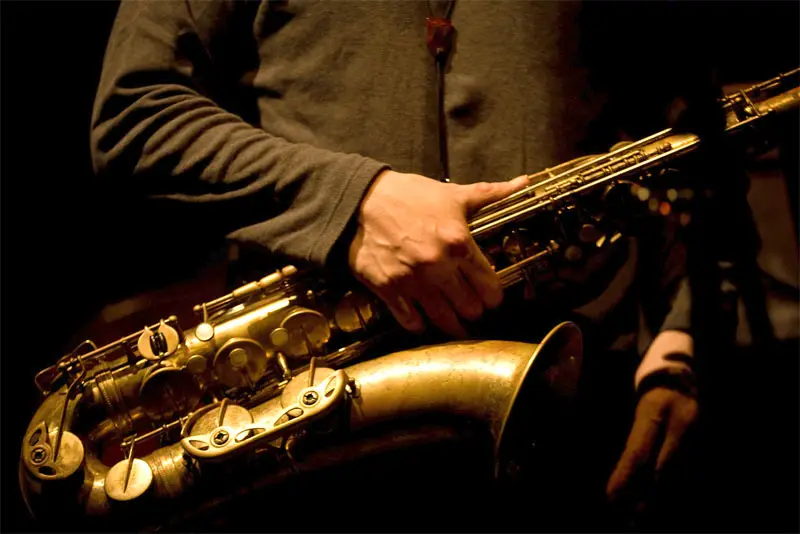
Boasting the second lowest pitch of the Big Four, the tenor sax is tuned to the key of B♭ and has a range one octave lower than the soprano sax. This sax is easy to distinguish from an alto sax due to the slight curve of its upper neck and the larger size.
It’s more difficult to play than other types, but has a darker tone and the same range as a tenor singer, resulting in it becoming the staple for musicians throughout the 1980s.
14. Tubax
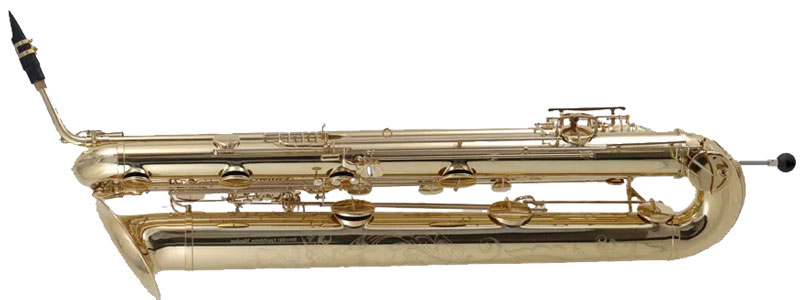
Invented by Benedikt Eppelsheim, the tubax solves a logistical problem faced by large saxophones by incorporating design features used in tubas. The dominant tubax is an E♭ contrabass, which has a more compact design than a true contrabass sax.
The sounds has more of a honk than other saxophones due to its shaping, but blends well when played beside true saxes. The tubax design is what finally allowed a functional subcontrabass sax to be built
Bonus Type: The Lost, Unfinished Prototypes of Adolphe Sax
Adolphe designed a large number of different saxophones over a relatively short time, but what a lot of sax enthusiasts don’t know is that some of his designs were never built. It’s unknown whether these designs all still exist or how many are archived at the Paris Conservatory where he taught.
What is known is that he suffered numerous lawsuits by rival inventors who envied his designs, leaving him to die penniless in 1894, which may have contributed to those designs being left on paper. To date, a variation of his subcontrabass sax is the only one of these designs that’s seen some form of incarnation.
Whether or not his unfinished prototypes will ever be recovered and built is an ongoing mystery that leaves many of his fans hopeful of a legacy that might not yet be over.

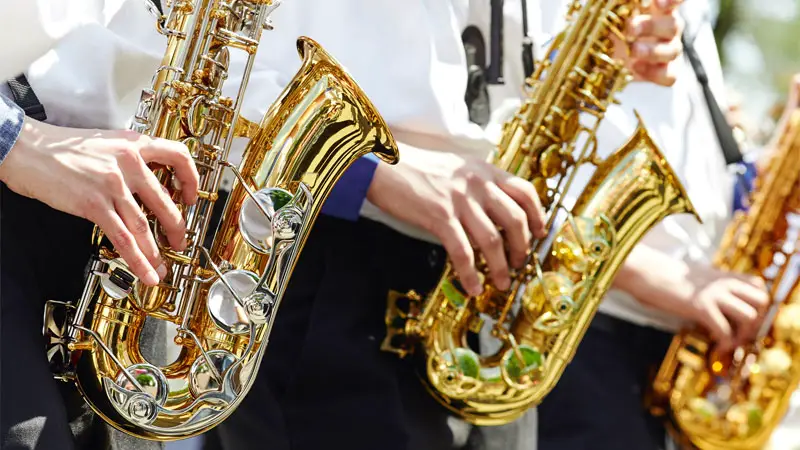
good info….love this work about saxes…play one my self…….!!